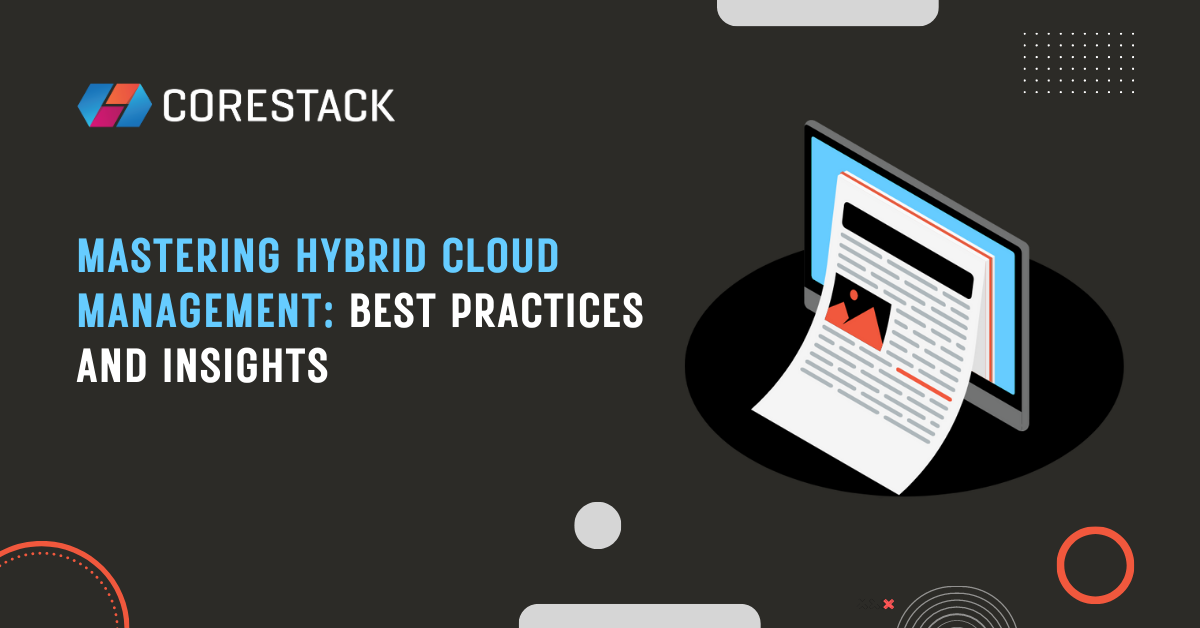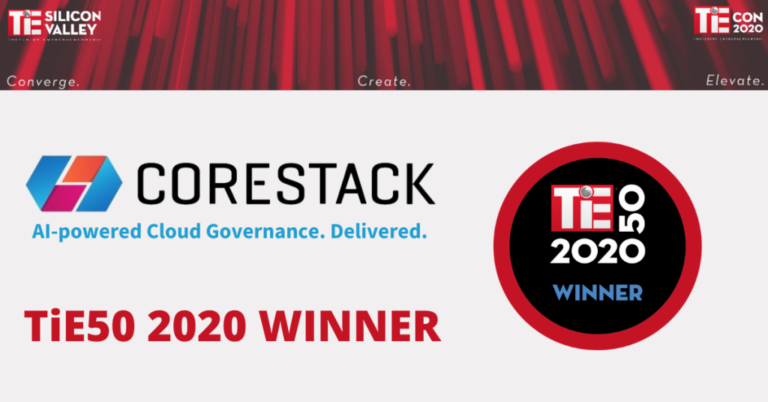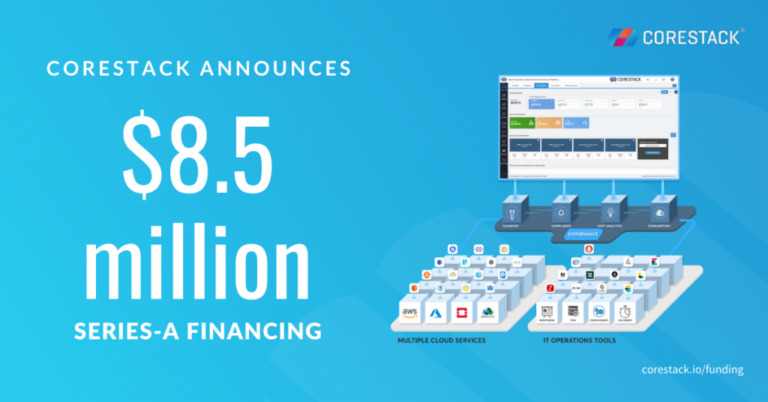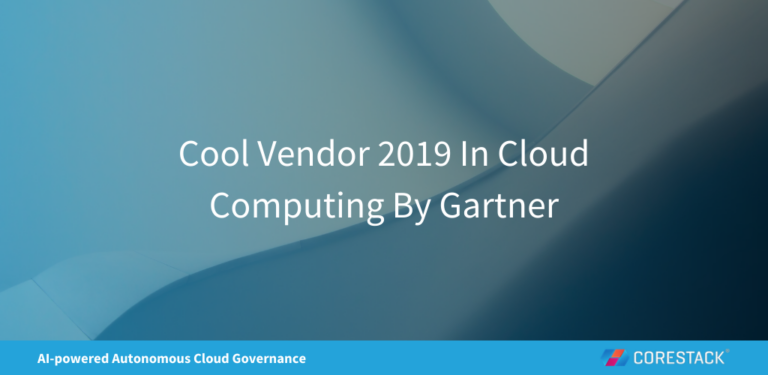Mastering Hybrid Cloud Management: Best Practices and Insights
Hybrid cloud is an essential aspect of modern IT operations that enables organizations to integrate public and private cloud resources. With hybrid cloud, teams can achieve several advantages, including cost savings, enhanced security, flexibility, and scalability.
Maximizing the benefits of hybrid cloud requires getting hybrid cloud management right. With effective hybrid cloud management, IT can optimize infrastructure to meet business requirements, reduce risk, and ensure compliance.
This article will explore hybrid cloud management in detail, including its benefits and challenges, best practices, five configuration strategies that can help teams optimize their hybrid cloud benefits, and how to choose the right hybrid cloud management solution.
Summary of key hybrid cloud management concepts
The table below summarizes the five advanced hybrid cloud management configuration concepts this article will explore in more detail. Organizations can enhance their hybrid cloud management capabilities by focusing on these concepts, ensuring a secure, efficient, and compliant IT infrastructure that adapts to evolving business needs.
| Concept | Description |
|---|---|
| Policy-based resource management | A method of governing resource usage, provisioning, and configuration in a hybrid cloud environment using predefined policies, addressing aspects such as cost optimization, security, and compliance. |
| Cross-cloud load balancing | The process of distributing traffic across multiple cloud environments and on-premises infrastructure to enhance application performance, reliability, and fault tolerance. |
| Hybrid cloud service mesh | A network infrastructure layer that enables seamless and secure communication between services and applications across different cloud environments and on-premises infrastructure, providing traffic management, service discovery, security, and observability. |
| Cross-cloud container orchestration | The management of containerized applications across multiple cloud platforms and on-premises environments, enabling efficient deployment, scaling, and migration while maintaining a consistent management experience. |
| Log management and analytics | The process of collecting, analyzing, and monitoring logs from various sources across a hybrid cloud environment to maintain application performance, security, and compliance. |
What is hybrid cloud management?
Hybrid cloud management is the process of optimizing and refining the integration and management of resources, services, and applications within a hybrid cloud environment.
Hybrid cloud management provides a unified management framework for all resources, applications, and workloads in a hybrid cloud environment while ensuring security, governance, and cost optimization. The process includes managing the integration, orchestration, and automation of cloud resources across different cloud providers, and monitoring and optimizing the hybrid cloud infrastructure's performance, availability, and cost. With effective hybrid cloud management, businesses can leverage the benefits of public and private cloud services while addressing the unique challenges of managing a complex, distributed computing environment.
An Azure Hybrid Cloud via VPN architecture that allows organizations to securely extend their on-premises networks to the Azure cloud and facilitate communication between the resources hosted in both environments. (Source)
Enhancing hybrid cloud management with advanced configuration strategies
No two hybrid cloud environments are exactly the same. Getting the most out of hybrid cloud requires teams to optimize their infrastructure to meet their unique needs. The five advanced hybrid cloud configuration strategies we’ll review in this section enable teams to improve their hybrid cloud infrastructure's performance, security, and compliance.
Policy-based resource management
Implementing policy-based resource management enables organizations to automate the allocation and utilization of resources across hybrid cloud environments. This approach helps enforce compliance, optimize costs, and maintain performance by allocating resources according to predefined policies and business requirements. Teams can use cloud management platforms like VMware vRealize Suite, Microsoft Azure Policy, or AWS Organizations to implement policy-based resource management. These platforms provide a centralized interface for defining and enforcing policies across multiple clouds and cloud services.
For example, you can use AWS Organizations to implement policy-based resource management in a hybrid cloud environment. The example SCP below denies attempts to run instances that are not a t2.micro instance type.
{
"Version": "2012-10-17",
"Statement": [
{
"Sid": "RequireMicroInstanceType",
"Effect": "Deny",
"Action": "ec2:RunInstances",
"Resource": [
"arn:aws:ec2:*:*:instance/*"
],
"Condition": {
"StringNotEquals": {
"ec2:InstanceType": "t2.micro"
}
}
}
]
}
Cross-cloud load balancing
Load balancing distributes workloads evenly across multiple cloud environments, ensuring optimal performance and high availability. Cross-cloud load balancing solutions can automatically route traffic to the most appropriate resources, enhancing application performance and fault tolerance in a hybrid cloud setting.
To enable load balancing across multiple clouds in a hybrid cloud environment, you can leverage load balancing solutions that can work with multiple cloud providers, such as F5 Networks’ BIG-IP or NGINX Plus. These solutions use algorithms to distribute traffic intelligently, ensuring it is routed to the cloud with the highest capacity or lowest latency. By implementing cross-cloud load balancing, you can enhance performance and minimize downtime for your applications running in a hybrid cloud environment.
Hybrid cloud service mesh
A service mesh is a dedicated infrastructure layer that manages service-to-service communication. A service mesh in a hybrid cloud environment enables secure, reliable, and efficient communication between microservices across different cloud platforms. Organizations can achieve better visibility, control, and resilience for their applications by implementing a hybrid cloud service mesh.
To establish a service mesh that spans multiple clouds in a hybrid cloud environment, you can utilize service mesh solutions that can work with multiple cloud providers, such as Istio or HashiCorp Consul. These solutions enable you to centrally manage microservices across multiple clouds by providing a unified control plane. By implementing a hybrid cloud service mesh, you can ensure consistent communication and reliability of microservices in a multi-cloud environment.
Cross-cloud container orchestration
Container orchestration automates container deployment, scaling, and management across multiple cloud environments. Cross-cloud container orchestration solutions, like Kubernetes, can help organizations manage containerized workloads consistently and efficiently across their hybrid cloud infrastructure. To implement cross-cloud container orchestration, you can use container orchestration platforms that support multiple clouds, such as Kubernetes or Docker Swarm. These platforms provide a unified interface for managing containers across multiple clouds.
Log management and analytics
Collecting, analyzing, and managing logs from various components in a hybrid cloud environment is crucial for ensuring security, compliance, and performance. Log management and analytics solutions can aggregate logs from multiple sources, providing insights into potential issues, trends, and areas for optimization. This data enables IT teams to make informed decisions and improve the overall health of their hybrid cloud infrastructure.
You can leverage log management and analytics platforms designed to work with multiple cloud providers, such as Elastic Stack or Splunk. These platforms provide a centralized and comprehensive view of logs from various clouds and applications, enabling you to efficiently collect, store, analyze, and visualize logs across your hybrid cloud infrastructure. By implementing an effective log management and analytics solution, you can easily identify and troubleshoot issues across multiple clouds, and gain valuable insights that can help you optimize your hybrid cloud infrastructure.
Best practices for strategic hybrid cloud management
The six hybrid cloud management best practices below focus on optimizing architectural and operational aspects of hybrid cloud infrastructure.
- Implement centralized management and monitoring: Use tools like Terraform, CloudFormation, or Azure Resource Manager for Infrastructure as Code (IaC) to centrally manage resources. Implement a comprehensive monitoring solution like Datadog, New Relic, or Grafana to aggregate data from multiple cloud providers and environments.
- Enforce strong security and compliance: Use Identity and Access Management (IAM) features provided by cloud providers to enforce the principle of least privilege. Leverage tools like AWS Config, Azure Policy, or Open Policy Agent (OPA) to define and enforce compliance rules across environments.
- Regularly perform cost optimization: Track and manage cloud spending using cloud provider cost management tools, such as AWS Cost Explorer or Azure Cost Management. Implement a tagging strategy for resources to better allocate costs and optimize resource usage.
- Strategically place applications and workloads: Choose the appropriate cloud environment for each workload based on factors like cost, performance, and security requirements. Utilize services like AWS Lambda or Azure Functions for event-driven, serverless computing to optimize resource utilization and reduce costs.
- Leverage data management and integration: Leverage cloud-native services like AWS Glue or Azure Data Explorer for data integration and transformation tasks. Use storage solutions like Amazon S3 or Azure Blob Storage for scalable and cost-effective data storage.
- Optimize network performance: Use Content Delivery Networks (CDNs) like Amazon CloudFront or Azure CDN to improve latency for users in different geographical locations. Optimize your network infrastructure using cloud-native tools like Amazon VPC or Azure Virtual Network.
How to choose the right hybrid cloud management solution
Selecting the appropriate hybrid cloud management solution is crucial for organizations seeking to optimize their cloud infrastructure while maintaining security, compliance, and cost-effectiveness. Here is a three-step process that provides a framework for finding the right solution for a unique set of requirements.
Step one: Define your business needs
Assess your organization's specific requirements and goals, including scalability, security, compliance, and budget constraints. Determine the level of integration and automation needed between your private and public cloud environments. Consider your organization's technical expertise and the amount of resources available to manage the hybrid cloud infrastructure.
For example, consider a large enterprise with strict regulatory requirements and a need for high-performance computing resources requiring advanced security features, compliance management, and seamless integration with existing on-premises infrastructure. Suppose they face these two challenges:
- Compliance management across different environments: Ensuring that data and applications comply with regulations in both on-premises and cloud environments can be complex.
- Consistent environment configuration: Maintaining consistent configurations across on-premises and cloud environments is crucial for smooth operation but can be challenging due to the inherent differences between these environments.
With this context in mind, the organization may choose a cloud provider like AWS GovCloud or Azure Government that specializes in serving customers with government regulations and compliance requirements.
Moreover, they may prioritize a hybrid cloud solution that provides consistent environments across on-premises and cloud environments, such as VMware Cloud on AWS or Azure Stack, enabling easy integration with their existing systems. These solutions can help replicate an on-premises environment in the cloud, reducing the complexity of managing different configurations. Infrastructure as Code (IaC) tools like Terraform or CloudFormation can also be used to maintain consistency in the infrastructure setup.
Step two: Evaluate different solutions
Evaluate the features and capabilities of various hybrid cloud management solutions in the market. Look for solutions that offer policy-based resource management, cross-cloud load balancing, hybrid cloud service mesh, container orchestration, and log management and analytics. Ensure that the solution supports multi-cloud and multi-vendor environments to maximize flexibility.
The specific challenges an organization faces will drive its decisions on a solution. For example, a company that relies heavily on containerized applications might face challenges in managing and monitoring them across different cloud environments.
A strategy to overcome this is selecting a hybrid cloud management solution that offers robust container orchestration capabilities, such as Kubernetes integration and supports a variety of container runtime environments. The company could also train its team to effectively manage and optimize containerized applications in the hybrid cloud environment.
As you evaluate different solutions, keep the business needs defined in step one in mind. This will help you identify the key features you need from a hybrid cloud management solution.
As you evaluate different solutions, each will have its own strengths and weaknesses. To help take an objective view, develop a clear evaluation framework that includes key criteria such as ease of use, integration capabilities, scalability, security features, support for multi-cloud and multi-vendor environments, cost, and vendor reputation. Use this framework to systematically evaluate different solutions and make a well-informed decision.
Step 3: Compare pricing models
Analyze the pricing models of different hybrid cloud management solutions. Some vendors may offer subscription-based pricing, while others may charge based on usage or the number of managed resources. Be mindful of additional costs, such as charges for premium features or support services. Choose a solution that aligns with your organization's budget and offers the best value for the features provided.
For example, a small business with a limited budget may opt for a hybrid cloud management solution with a pay-as-you-go pricing model, which allows them to only pay for the resources they actually use, minimizing upfront costs and providing more flexibility as their needs change over time. This pricing model can be especially beneficial for small businesses with fluctuating resource demands as it allows them to optimize their resource usage and avoid unnecessary expenses. By prioritizing cost-effectiveness, small businesses can take advantage of the benefits of hybrid cloud technology without incurring significant expenses.
By carefully evaluating your organization's needs, considering the features and capabilities of different solutions, and comparing pricing models, you can choose the right hybrid cloud management solution that best meets your business requirements and ensures optimal performance, security, and compliance across your hybrid cloud environment.
|
Platform
|
Provisioning Automation |
Security Management |
Cost Management |
Regulatory Compliance |
Powered by Artificial Intelligence |
Native Hybrid Cloud Support
|
|---|---|---|---|---|---|---|
|
Azure Native Tools |
✔
|
✔
|
✔
|
|||
|
CoreStack
|
✔
|
✔
|
✔
|
✔
|
✔
|
✔
|
Conclusion
Effective management of a hybrid cloud environment allows businesses to optimize performance, reduce operational overhead, ensure security and compliance, and manage costs. To choose the right hybrid cloud management solution, it is essential to consider factors such as integration with existing infrastructure, multi-cloud support, scalability, flexibility, ease of use, automation, security, compliance, cost management, and available support and community resources. By carefully evaluating these factors and aligning them with your organization's specific needs and use cases, you can select the most suitable hybrid cloud management solution to maximize the benefits of your hybrid cloud infrastructure.
While the task of choosing a hybrid cloud management solution involves various factors, CoreStack’s NexGen governance platform can provide a well-rounded solution to mitigating challenges of managing hybrid setups.
CoreStack is designed to seamlessly integrate with your existing infrastructure and supports multiple clouds, offering a comprehensive and unified platform for managing your hybrid cloud environment. Its scalability and flexibility cater to your evolving business needs, accommodating growth and change in a dynamic business landscape.
With its user-friendly interface and automation capabilities, CoreStack stands out to streamline complex cloud management tasks. This empowers your team to shift their focus from maintenance to innovation. The platform also provides robust security features and compliance management tools, easing the burden of maintaining safety and compliance in your cloud environment.
Further, its intelligent cost management features enable you to effectively track and optimize your cloud expenses, ensuring that you're maximizing the value from your cloud investments. Backed by a dedicated support team and a vibrant community of users, you're never alone in your cloud management journey with CoreStack.








